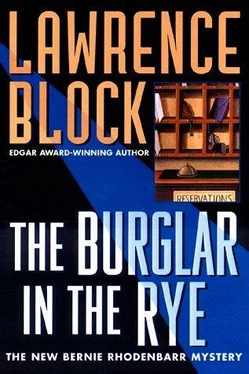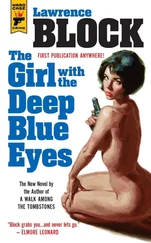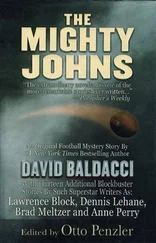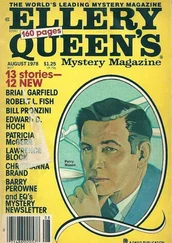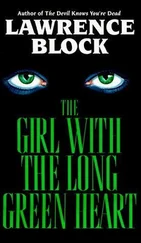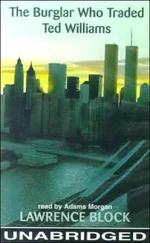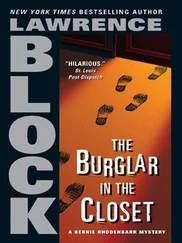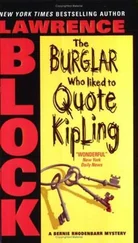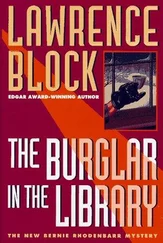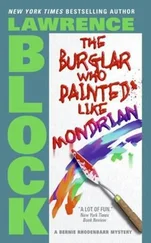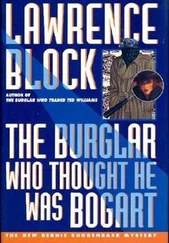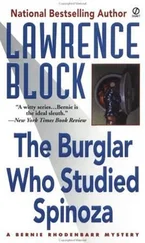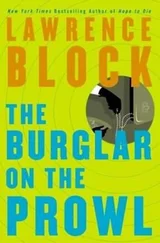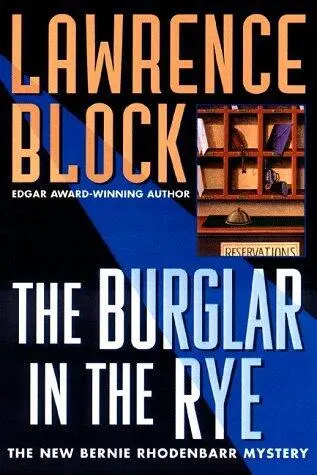
Lawrence Block
The Burglar in the Rye
A book in the Bernie Rhodenbarr series
This one’s for Joe Pittman
The author is pleased to acknowledge his gratitude to the crew and passengers of the clipper ship Star Flyer, where much of the writing of this book was done en route from Phuket to Athens.
The lobby was a bit the worse for wear. The large oriental carpet had seen better days, lots of them. The facing Lawson sofas sagged invitingly and, like the rest of the furniture, showed the effects of long use. They were in use now; two women sat in animated conversation, and, a few yards away, a man with a long oval face and a high forehead sat reading a copy of GQ. He wore sunglasses, which made him look dapper and sly. I don’t know how they made the magazine look. Dark, I suppose.
While the lobby may have been the least bit down at the heels, the overall impression was not so much of shabbiness as of comfort. The glow of a fire in the fireplace, a welcome sight on a brisk October day, put everything in the best possible light. And, centered above the fireplace mantel, painted with such œil-tromping realism you wanted to reach out and pick him up and hug him, was the hotel’s namesake.
He was a bear, of course, but not the sort whose predilection for sylvan defecation is as proverbial as the Holy Father’s Catholicism. This bear, one saw at a glance, had never been to the woods, let alone behaved irresponsibly there. He was wearing a little red jacket, and he had a floppy royal blue rain hat on his head, and his legs ended in a pair of Wellington boots the color of a canary, and every bit as cheerful. He was perched on a shelf between a battered Gladstone grip and a shopping bag from Harrods, and a stenciled sign overhead proclaimed, “Left Luggage,” and…
But I don’t need to go on, do I? If you didn’t have such a bear yourself, surely you knew someone who did. For this was Paddington Bear himself, and who else should it be? Who better to grace the lobby of the legendary Paddington Hotel?
And legendary was the word for it. The Paddington, seven stories of red brick and black ironwork, stands at the corner of Madison Avenue and East Twenty-fifth Street, across from Madison Square and not far from the site of Stanford White’s Madison Square Garden. (That was the second Madison Square Garden, as opposed to Garden #3, the one your father remembers at Eighth Avenue and Fiftieth Street, or the current entry, Garden #4, above Penn Station. White’s Garden was an architectural masterpiece, but then so was the original Penn Station. Sic transit damn near everything.)
But not the Paddington, which had gone up before the Garden and had lived to tell the tale. Built around the turn of the century, it had watched the neighborhood (and the city, and the world) reinvent itself continually over the years. For all that, the old hotel remained essentially the same. It had never been terribly grand, had always had more permanent residents than transient guests, and had from its earliest days drawn persons in the arts. Brass plaques flanking the entrance recorded some of the Paddington’s more prominent tenants, including the writers Stephen Crane and Theodore Dreiser and the Shakespearean actor Reginald French. John Steinbeck had spent a month there during a period of marital disharmony, and Robert Henri, the Ashcan School artist, had stayed at the Paddington before relocating a few blocks south and east at Gramercy Park.
More recently, the hotel had drawn touring British rock stars, who seemed less inclined to destroy rooms here than in other American hotels, either out of respect for its traditions or from a sense that the damage they did might go unnoticed. Two of them had died on the premises, one murdered by a drifter he’d brought back to his room, the other more conventionally of a heroin overdose.
Classical music was represented as well, by at least two of the permanent residents, and the occasional performer on tour. An octogenarian pianist, Alfred Hertel, whose annual Christmas concert at Carnegie Hall was always sold out, had occupied an apartment on the top floor for over forty years. At the opposite end of the same floor lived the aging diva Sonia Brigandi, whose legendary temperament survived the decline of her legendary soprano voice. Once in a while one or both of them would leave their doors open, and one would play what the other would sing, thrilling (or annoying) the other residents with something from Puccini or Verdi or Wagner.
Other than that they didn’t speak. Rumors abounded-that they’d had an affair, that they’d been rivals for some other tenant’s affections. He was said to be gay, although he’d been married twice and had children and grandchildren. She had never married and was said to have had lovers of both sexes. And both of them were supposed to have slept with Edgar Lee Horvath, who’d never slept with anyone. Except for his bears, of course.
It was Horvath, the founder of Pop Realism, who had painted the Paddington Bear over the lobby fireplace. He’d taken rooms in the hotel in the mid-sixties, shortly after the success of his first one-man show, and had lived there until his death in 1979. The painting had been a gift to the hotel, given early in his stay, and, with the sharp increase in value of Horvath’s works since his death, it was probably worth close to a million dollars. And there it was, hanging right there in plain sight, in an essentially unguarded lobby.
Of course a person would have to be crazy to steal it. Edgar Horvath had painted a whole series of teddy bears, from bedraggled early Stieff creations to contemporary plush creatures, and a teddy bear of one sort or another was invariably present in his portraits and landscapes and interiors. His desert landscapes, done during a brief stay in Taos, show bears sprawled at the foot of an enormous cactus, or straddling a fence rail, or propped up against an adobe wall.
But, as far as anyone knew, he’d only painted Paddington once. And that painting hung famously in the hotel’s famously threadbare lobby. It was there for the taking, but so what? If you hooked that painting, how and to whom would you sell it?
I knew all that. But old habits die hard, and I’ve never been able to look at something of great value without trying to figure out a way to rescue it from its rightful owner. The painting was in a massive frame of gilded wood, and I pondered the relative merits of cutting it out of its frame as opposed to lifting it, frame and all.
I was busy contemplating grand larceny when the desk clerk asked if he could help me.
“Sorry,” I said. “I was looking at the painting.”
“Our mascot,” he said. He was a man about fifty, wearing a dark green silk shirt with a flowing collar and a string tie with a turquoise slide. His hair was Just for Men black, and his sideburns were longer than fashion would have them. He was clean-shaven, but he looked as though he ought to have a mustache, and as though it ought to be waxed.
“Poor Eddie Horvath painted him,” he said. “Such a loss when he died, and so ironic.”
“He died in a restaurant, didn’t he?”
“Right around the corner. Eddie had the world’s worst diet, he lived on cheeseburgers and Coca-Cola and Hostess cupcakes. And then some doctor convinced him to change his ways, and overnight he became a health-food fanatic.”
“And it didn’t agree with him?”
“I didn’t notice any difference,” he said, “except that he became a bit of a bore on the subject, as converts will do in the early days of their conversion. I’m sure he’d have outgrown it, but he never had the chance. He died at the dinner table, choked to death on a piece of tofu.”
Читать дальше
